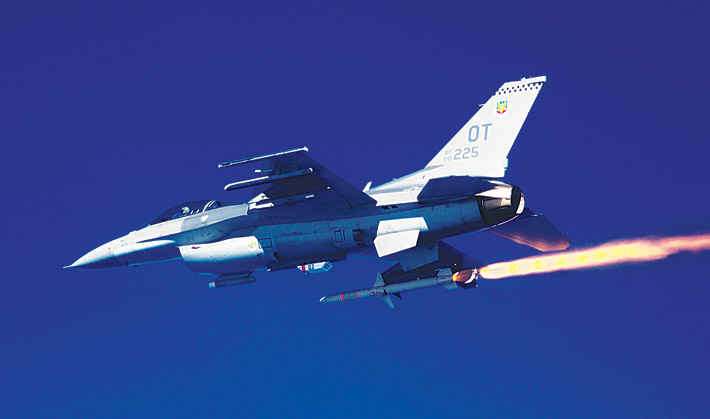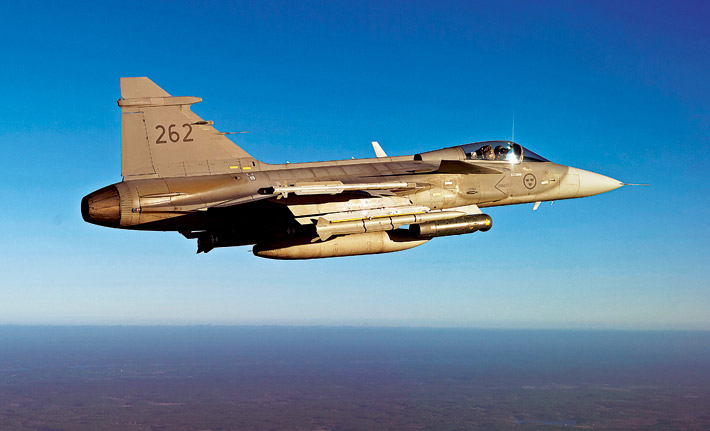INDIAN ARMED FORCES CHIEFS ON
OUR RELENTLESS AND FOCUSED PUBLISHING EFFORTS

SP Guide Publications puts forth a well compiled articulation of issues, pursuits and accomplishments of the Indian Army, over the years

I am confident that SP Guide Publications would continue to inform, inspire and influence.

My compliments to SP Guide Publications for informative and credible reportage on contemporary aerospace issues over the past six decades.
Acquisition Dilemmas for the IAF
The IAF will need to induct combat aircraft in large numbers and aerial tankers as these serve as force multipliers and enhance the operational capability of the combat fleet

In the wake of the changing geopolitical and geostrategic environment, the situation in the region has been deteriorating rapidly. Tension between India and Pakistan is at an all-time high and there does not seem to be any indication of the possibility of de-escalation. The conflict between the two nations is constantly fuelled by the problem in Jammu and Kashmir to which there is no solution visible on the horizon. Pakistan is fully aware of the state of the Indian armed forces and is exploiting this weakness to the hilt for the achievement of political objectives. Its mentor China is also getting increasingly belligerent with its aggressive posturing in the South China Sea and is hurting India’s interests in the region. The People’s Liberation Army Air Force (PLAAF) is rapidly enhancing its capability to undertake offensive air operations from its recently commissioned bases in Tibet. The PLAAF has been regularly conducting air exercises along the Indo-Tibetan border. China and Pakistan are collaborating in a major economic venture dubbed as China Pakistan Economic Corridor (CPEC) which passes through Pakistan Occupied Kashmir (PoK), a region under dispute between India and Pakistan. As India has claim over POK, this project has the potential for a conflict between India and Pakistan.
China has made inroads into practically all the nations in India’s neighbourhood. Her geopolitical influence in the countries in the Indian Ocean Region (IOR) has been growing through the development of their ports and airfields. She has also been fostering stronger diplomatic and economic relationship with India’s neighbours. But what ought to be of relevance and concern for India and particularly for the Indian Air Force (IAF), is the fact that China has been supporting the establishment and growth of the Pakistani military aerospace industry. Apart from piston-engine and jet-powered basic trainer aircraft, the Pakistan Aeronautical Complex (PAC) is engaged in the licensed production of the JF-17 Thunder, a third generation light-weight multi-role combat aircraft for the Pakistan Air Force (PAF). The PAF is well on the way to build up a sizeable fleet of the JF-17 through domestic production. It would be logical to expect that the Chinese aerospace industry will support the PAC to manufacture under licence, the fourth and ultimately even fifth generation combat aircraft. The IAF will undoubtedly be required to cope with this emerging challenge.
Combat Fleet of the IAF
The primary component of the IAF for the projection of offensive air power is its fleet of combat aircraft. The IAF is authorised 42 squadrons in its combat fleet. With each squadron equipped with around 20 aircraft, ideally, the IAF should have around 840 aircraft on its inventory. Over the years, as the different versions of the MiG-21whose induction had begun in the mid sixties, were being retired from service, the strength of the combat fleet has dwindled. The last major contract for induction into the combat fleet was for the Sukhoi Su-30 MKI from Russia. Dubbed as the Air Dominance Fighter, the contract for the supply of 272 was concluded in 2000 to be manufactured under license by the Indian aerospace major the Hindustan Aeronautics Limited (HAL) at its factory that was to be set up at Nashik. Delivery against this order is scheduled to be completed by 2019. In the meantime, the order has been increased to 312 which is equivalent of 15 squadrons.
IF THE STALEMATE CONTINUES, THE IAF WILL BE LEFT WITH NO OPTION BUT TO PLACE ORDERS ON HAL FOR ADDITIONAL SU-30 MKI AIRCRAFT, THOUGH SOMEWHAT RELUCTANTLY
Efforts by the IAF to induct 126 Rafale jets, a fourth-generation combat aircraft from Dassault of France, ran aground. After eight years of waiting, the tender was cancelled and replaced by a direct deal with the government of France in which the IAF will receive just 36 aircraft which will not be enough to arrest the alarming erosion in operational capability. To add to the woes of the IAF, the indigenous light combat aircraft, Tejas, which has been under development for more than three decades, continues to remain a distant dream.

As of today, the strength of the combat fleet is down to 32 squadrons or 640 aircraft against the required level of 840 aircraft. The IAF is thus deficient of 200 combat aircraft. The situation is likely to get worse as 11 squadrons (220 aircraft) of the different versions of the MiG-21 and the MiG-27 aircraft currently in service, are scheduled to be phased out by 2024. The number of combat squadrons will reduce further to 21 which equivalent of 420 aircraft. By 2025, the combat fleet of the IAF could well be deficient by 420 aircraft if there are no fresh inductions by then. However, the deficiencies would be made up partially by the supply of the remaining Su-30 MKI aircraft on order, 36 Rafale jets and hopefully a few squadrons of the Tejas. But even with these inductions, the IAF will be well short of the strength of 42 squadrons authorised for the combat fleet. Under these circumstances, the IAF will not be in a position to face the challenges it may be confronted with. While the IAF will need to induct combat aircraft in large numbers, it will also need to expand its fleet of aerial tankers as these serve as force multipliers and effectively enhance the operational capability of the combat fleet.
Single-Engine Combat Aircraft
To tackle the looming crisis for the IAF, in October last year, the Ministry of Defence, through Indian embassies, approached some global aerospace companies seeking their response to the proposal to manufacture a single-engine combat aircraft in large numbers for the IAF. Two original equipment manufacturers (OEM) responded to the proposal. Lockheed Martin of the US offered to shift the only production line of the F-16 located in Fort Worth, Texas, to India and manufacture the Block 70, the latest version of fourth-generation plus class. The US Air Force will not order any more of this platform. Saab of Sweden offered to set up a facility in India to manufacture the JAS-39 E Gripen which compared to the F-16 is a more modern platform. Both these are capable aircraft and will meet with the requirement of the IAF. However, an advantage the F-16 offers over the Gripen if manufactured under the ‘Make in India’ scheme, is that apart from the numbers required by the IAF, there is a ready market available as around 25 countries across the globe are operating this platform. There may also be some new customers. The other indirect benefit for the nation that might accrue from the F-16 deal would be the strengthening of ties with the US under the new Government through high value defence deals. One advantage the Gripen option has that Saab is prepared to collaborate in the development of the Tejas Mk II as also the indigenous Advanced Medium Combat Aircraft that is still on the drawing board.

The situation at present is that the offer by Lockheed Martin to relocate production line in India is under scrutiny by the Trump administration as the new government in the US is chary about loss of employment for its citizens as a result of this move. The OEM itself does not share the concern of the US government on this issue. India will just have to wait for the final decision by the Trump administration. If it is in the negative, the Gripen option is always available. Delay in the matter is extremely agonising for the IAF especially as its status has been reduced to that of a helpless bystander. If the stalemate continues, the IAF will be left with no option but to place orders on HAL for additional Su-30 MKI, though somewhat reluctantly.
Endless Struggle for Aerial Tankers
Beginning in 2003, the IAF inducted a fleet of six Russian Il-78 aerial tankers that served as force multipliers that are essential for enhancing the combat potential especially of the fighter fleet. Apart from the inadequate fleet size, the IAF experienced problems of poor serviceability and low flight-line availability of the Russian platform. A global tender for six aerial tankers was floated by the MoD in 2006 in which the IAF selected the twin-engine Airbus A330 MRTT against the II-78. However, the MoD did not endorse the selection citing higher unit cost. Apparently, the IAF had not recorded the advantages the A330 MRTT offered over its competitor in respect of operating and life-cycle cost. This aspect was duly addressed by the IAF when the global tender was refloated in September 2010. In January 2013, once again the A330 MRTT emerged as the preferred platform. Unfortunately for the IAF the second tender was also cancelled in June 2016 for the same reason. It is understood that the MoD is now looking at the second option of acquiring the cheaper Boeing the KC-46 Pegasus instead through the Foreign Military Sales programme of the US government. As compared to the A330 MRTT, the KC-46 is smaller in size and has lower payload capacity. However the possibility of MoD refloating the global tender for aerial tankers cannot be ruled out. If this happens, it is expected that multiple companies, including Airbus and Boeing, will participate. Therefore, the time frame for induction cannot be predicted with any degree of certainty. Even after 11 years of effort, the IAF has not been successful in strengthening this segment of force multipliers. The government needs to address this problem without any further delay.





